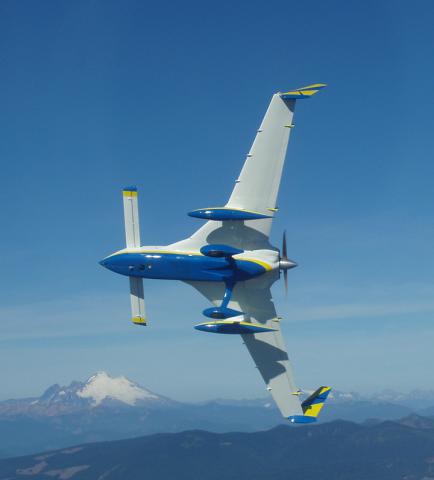

From 2000 to 2003, I had the privilege of introducing the senior class at USAF Test Pilot School (TPS) at Edwards AFB to the history and characteristics of the Long-EZ as part of the school's Qualitative Evaluation Program.
Originally, I participated partly because of the chance to fly with the folks at TPS, and partly because they promised me a ride in a T-38 (greatest experience of my flying career - I was like a kid in a candy store).
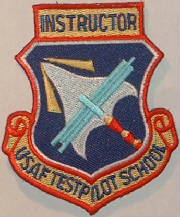
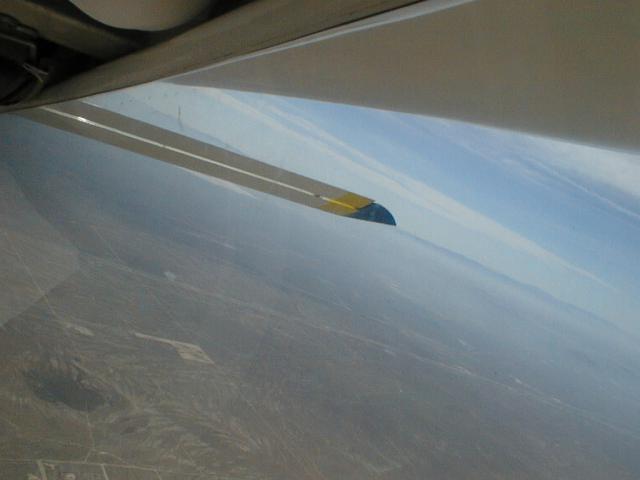
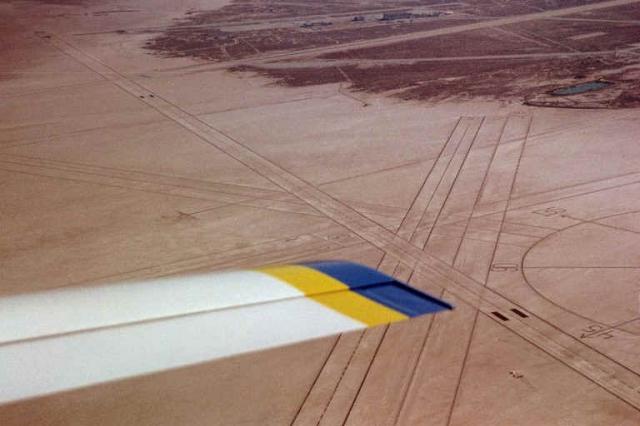
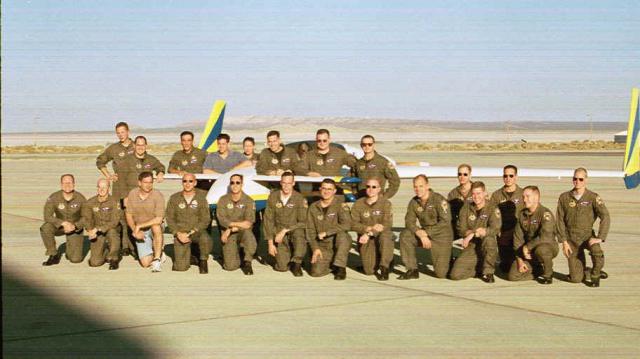
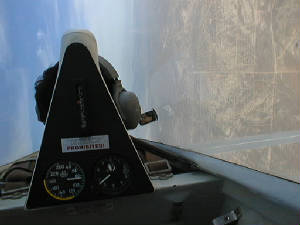
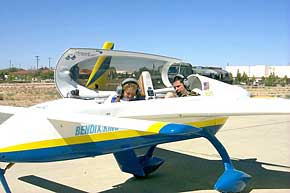
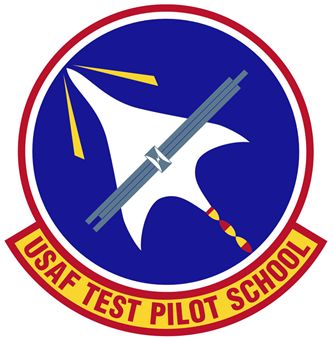
Runways painted on the lake bed seen over the canard
Thanks to a careless Navy submarine which surfaced underneath a Japanese fishing boat, civilians are no longer allowed at the controls of most military vehicles, so I have continued my participation in the program because of the chance it provides me to teach the strengths and weaknesses of the Long-EZ to a group of skilled, motivated pilots and flight test engineers.
The first class I instructed (see picture above) was Class 00A. They set the tone for all future visits. I would arrive on Monday morning and immediately present a 1-hour briefing on the Long-EZ, its characteristics, and what to expect while flying it. I also covered operational considerations, since the pilots in the class would be flying the plane from the front seat.
The grin from piloting a T-38 and breaking the sound barrier (finally!)
Inverted over the north end of Edwards Dry Lake
Maj. Kelly Latimer, a TPS instructor, gets ready to fly the Long-EZ from the front seat
I’m not actually a staff instructor; but I was given the patch after my 50th student flight
Student's view of aerobatics from the back seat
The very first TPS student I ever flew, Jim "Mash" Dutton, was selected in the 2004 class of NASA astronauts. Probably because of the additional skill he gained from flying a Long-EZ. He was selected and flew as the pilot of Space Shuttle mission STS-131 in April 2010.
The flights themselves are usually pretty tame, including some basic handling tests (control inputs, trim shots, wind-up turns, steady-heading sideslips, acceleration tests, and roll reversals, to name a few) and mild aerobatics (aileron roll, barrel roll, wingover, loops), all over the barren northern edge of Muroc dry lake.
One truly stressful aspect of my visits is the requirement that I allow the student pilots to fly my plane from the front seat, with me in back as an instructor. There's nothing quite like trusting someone else to fly your pride and joy. Letting my kids drive my car will be easy by comparison. On the whole, the TPS pilots do a great job handling the plane, although its pitch characteristics are much more sensitive than most planes they have flown.
What makes the flights interesting, besides the chance to share my love of flight and EZ's with the students, are the unusual planes we usually encounter in flight. These have included U-2, F-14, F-15, F-18, F-22, F-35, B-52, B-2, Global Hawk, V-22 and P-51. It really gets your attention when the controllers tell you that a flight of 3 F-16's is approaching you head-on at Mach 1.5 and "please maneuver to provide separation".
It is also a blast to fly over the shuttle landing runways painted on the dry lake bed.
I taught my last course in September 2003, having worked with 5 classes. Although some aspects of the missions might get a little monotonous, such as flying the exact same lesson plan 13 times in 4 days, I still enjoy the intelligence, eagerness, and professionalism of all the TPS students and staff. It is especially rewarding when one of the students suddenly realizes that flying something smaller and slower than an F-16 can actually be just as much fun.
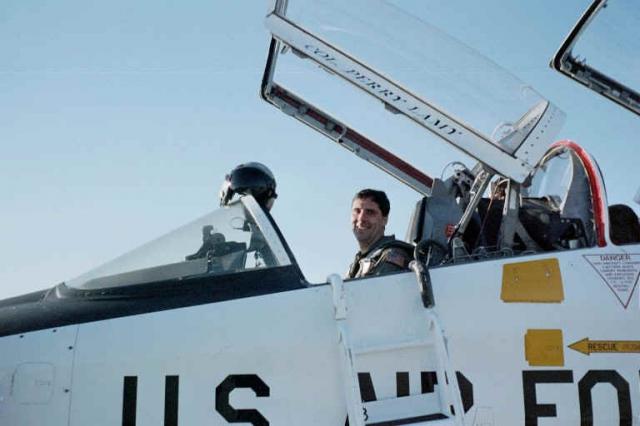
Class 00A pose with me and Invictus